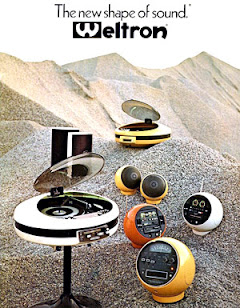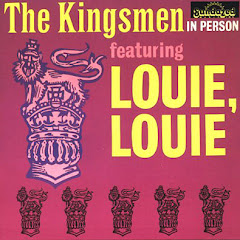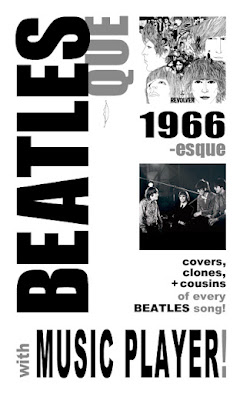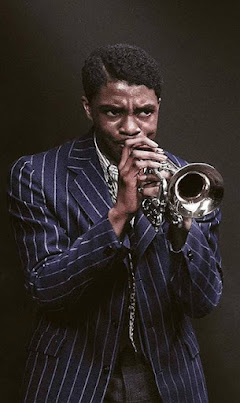STARSTRUCK Deluxe Edition book.)
it's the history of STARSTRUCK!!"
I often say, "STARSTRUCK is the greatest comic you've never read". And people say, "Well, what is it exactly?"
(Or "Who are you?," or "How does this relate to Rock or Sex?", or "Please respect the 100 feet distance from the restraining order, sir.")
So here's the lowdown...
Chapter quick-links:
- 1-THE STAGE PLAY
- 2-THE GRAPHIC NOVEL
- 3-"Well, what is it exactly?"
- 4-EPIC COMICS
- 5-DARK HORSE COMICS
- 6-IDW PUBLISHING
- 7-A Riot Of Our Own
- 8-"How does this relate to Rock or Sex?"
> Starstruck official website
1 -
T H E
S T A G E
P L A Y
Galatia 9 (Elaine Lee),
Brucilla The Muscle (Susan Norfleet Lee).
(photos, © Sean Smith)
STARSTRUCK began as a science fiction stage play performed off-Broadway in 1980. It was co-written by Elaine Lee, who was acting on a TV soap opera at the time, along with her sister Susan Norfleet Lee and Dale Place. Elaine played the wily hero Galatia 9 while Susan played her kickass partner Brucilla The Muscle. By chance they'd hooked up with reknowned comics artist Michael Wm. Kaluta, who went from volunteering for the poster to designing the sets and costumes, and even building them with compatriot artist Charles Vess.
STARSTRUCK was also created during the exploding late '70s/early '80s NYC scene, whose Do-It-Yourself spirit ignited the first Punk bands of CBGB's, the No Wave and Punk Funk aftermath, the dawn of Hip Hop, the splicing of Mutant Disco, the skronknoize Jazz bands, and a bristling Indie film movement. This entire subcultural scene overlapped and propelled itself.>>> There was apocalypse around the corner and all bets were off. Make what you can with what you got. Created in this combustible gumbo, STARSTRUCK the play was likewise DIY with its wicked and satirical humor, its sets and costumes collaged from street throwaways, its gender-upending, and its postmodern absurdism. It was postpunk science fiction for the new rebel underground.
STARLOG magazine noticed enough to cover the ensuing madness of this demented semi-musical (#41, Dec 1980) and a portfolio of designs by Kaluta was released. But that was just the beginning.
Starlog cover and article;
Erotica Ann portrait for the Starstruck portfolio
The STARSTRUCK play was essentially like an episode of STAR TREK; on a few ship sets, heroes and villains flung witty dialogue along with some fists. And there were songs and outlandish costumes. And farrr more lead women. Along the way characters rapped rich backgrounds mentioning other characters never shown. Lee and Kaluta realized this backstory was too good to waste. It was too grand to stage or film but Michael could draw it better anyway. So the first STARSTRUCK illustrated adventures began.
So the first STARSTRUCK illustrated adventures began.
Middle: Kalif Bajar (Paul Ratkevich), Erotica Ann (Karen Stilwell),
Rah El Rex (Neal Ashmun), Bronwyn of the Veil (Kathy Gerber)
Bottom: Galatia 9 vs. Verloona
(All play photos, © Sean Smith)
2 -
T H E
G R A P H I C
N O V E L
But where could they possibly print these Pulp/Punk future stories?
At the time the rules of speculative illustrated fiction had been rewritten by METAL HURLANT magazine, a French countercultural exploration of high art, sophisticated stories, and pervasive sensuality. The standard set by creators Moebius, Philippe Druillet, and Enki Bilal raised the bar for mature comics dramatically by filtering the fantasy and science fiction of the radical '50s EC comics through the uncensored advances of the '60s underground comix.
Heavy Metal and its Starstruck article
The first wave of STARSTRUCK magazine comics stories, a series of prequel vignettes to the play, were a natural for this graphix revolution. These serial stories first debuted in the similar Spanish anthology, ILUSTRACION+COMIX INTERNATIONAL, edited by Joseph Toutain in 1981; the intricate watercolourish washes were by uncredited Spanish artists using Kaluta's color directions. They were then reprinted in HEAVY METAL, the American version of Metal Hurlant, from 1982 to 1983. There was also an article about it all (HM #74, May 1983) and a second staging of the play.
The Indie underground spirit was infiltrating the comic book world as well. In the early '80s, DC and Marvel found their duopoly undermined by upstart start-ups like Star Reach, First, Pacific, and Eclipse Comics. These rebels bypassed the newstand and drugstore racks to sell directly through the emerging network of comics-only stores. Most welcome of all, the creators retained the rights to their work while the company only distributed it. Pulp paper was replaced by more archival stock and color got more advanced. Without corporate control, fake morality Codes, or a teen threshhold, they were free to do whatever they wanted. Like independent record labels, they infused a stagnant industry with vital new blood. There were new standard-bearers like AZTEC ACE (Eclipse), MARVELMAN (Quality), AMERICAN FLAGG (First), and LOVE AND ROCKETS (Fantagraphics).
The two majors noticed.
(All STARSTRUCK words and images,
© Elaine Lee and Michael Wm. Kaluta)
In Marvel's more mature line of graphic novels they chose to collect all of the HM stories. "STARSTRUCK: The Luckless, The Abandoned and Forsaked" graphic novel came out in 1984. The format was really big (8 1/4 x 11") and the color lush and translucent like watercolors. Stacked against anything else out its 74 genius pages were formidable.
Kaluta was most known for his gritty, retro work on THE SHADOW (1973), all edgy intensity and Pulp chiaroscuro. But his STARSTRUCK was a revelation: a vast dreamlike landscape infused with light like Winsor McCay; the technology of Dick Calkins' '30s BUCK ROGERS strips filtered through the hallucinatory kineticism of Moebius; and the elegant architecture and design sense of Alphonse Mucha and Gustav Klimt.
But Lee upped the ante with her storytelling: these prelude stories covered generational arcs in short and long gallops; the narrators rotated, the conversations overlapped or piled up or became song verse; the glossary was intergalactic and hysterical; the dialogue was so crackling you read it out loud to savor it; what seemed like happenstance eventually built up in layers and every minor thing paid off startlingly. It was a bit like William S. Burroughs writing STAR WARS, or Lily Tomlin writing DUNE, or Robert Altman filming FIREFLY, only much funnier and weirder.
You didn't read STARSTRUCK...you held on like a rollercoaster and tried to keep up.
by uncredited Spanish artists.
3 -
"Well, what is it exactly?"
Let's see, where to begin?
It involves a gradually dumbing dynasty versus a revolutionary cowgirl, pleasure droids who become sentient, an amazon clone and freelance fighter, passive/passive space nuns, an omnivorously sensual scheme queen, The Brand New Testement, robot samurai, frivolous cults, Noir detective bartenders, piously jingoistic space fleets, street-lethal Girl Scouts, schizoid dandies, alien boytoys, copious booting (see: boots, knocking), immortality bootlegging, Art Squads from the aesthetic planet Guernica ("Sex is art and art is power."), the infamous Recreation Station 97, and everything is increasingly connected.
There is much drinking, explosions, polymorphous polyamory, slapstick chaos, some songs, and vicious satire that goes down like ice cream. You'll laugh, you'll think, you'll feel hot to trot.
The most profound innovation of STARSTRUCK was its redefinition of female leads. To be fair, a male industry selling to presumed teen boys had made some advances in the '70s responding to Feminism. There were more women heroes up front, with equal strength and solo titles. But attitude and aggro don't equal depth or range. And often it felt like they were still just stronger pin-ups for young guys who hadn't worked out their range of respect yet beyond fists and fishnets. You wished there was a mature illustrated fiction where characters were just individuals with real personalities, period. Where gender was about as relevent as a shirt and any sensuality was natural as breathing.
But STARSTRUCK was already beyond all that. Lee wasn't interested in a SciFi that was trapped in the didactic slants of anyone's war of the sexes. She unleashed a universe of possibility where everyone fended for themselves full-on. Everyone was as unique, quirky, irritating, horny, and surprising as reality. These people lived, they breathed, they were a riot. Seeing that fuller range in fruition was the real liberation.
Meanwhile the most edgy advance for women in the normal comics was that Elektra could be just as much an amoral @$$hole as The Punisher. (Nice layouts though.)
4 -
E P I C
C O M I C S
all 6 issues, Epic Comics, 1985-86.
Marvel Comics had responded to the threat of Heavy Metal with their own Epic Illustrated magazine. In their most inspired move of the '80s they started a seperate imprint for mature titles called Epic Comics. These were creator-owned series for adults, edited by the beloved Archie Goodwin, who promptly roped in Lee and Kaluta to do a bi-monthly STARSTRUCK comic book. It would be 'direct market' only to comic stores, in amounts limited to market sales. They could do whatever they wanted.
The revolution would be serialized.
The comic series continued from the sprawling set-up of the graphic novel, but focused more fully on the cosmic misadventures of the swashbuckling Galatia 9 and fireball Bruscilla. There were six issues of 30 pages each from 1985 to 1986, no ads except for their own T-Shirts, and often character photos from the play inside the cover. After decades of comics with misregistered color on pulp paper, these specialized books had stronger, brighter stock and more controlled color. These comics also cost more, but maturing readers like me dropped the newstand superhero stuff entirely for direct-market books that rewarded our attention and our age.
But not enough of us. STARSTRUCK was like a secret even your best friends missed out on and it was discontinued. But it wasn't truly ended.
5 -
D A R K
H O R S E
C O M I C S
all 4 issues, Dark Horse, 1990-91.
Par for the course, in its wake, the mainstream started catching up. Alan Moore and Frank Miller paved most of that in 1986, and DC's separate Vertigo Comics later succeeded in the adult path that Epic had paved. By 1990, the upstart indie Dark Horse Comics felt the time was right for Lee and Kaluta to try finishing what they started.
The "STARSTRUCK: The Expanding Universe" revised series came out with a revitalized and revisionary mandate: it would reprint everything but with over 320 pages of new material laced through; there would be 12 issues covering three major arcs until it was all done.
The only catch was it was black and white and cost about twice as much. And there was the page size thing; to mirror the more square-ish dimensions of the story portions from the graphic novel, the new integrated page art left more blank air at the bottom of the rectangular book. But hey, Kaluta was drawing his butt off, so extending the art was a bit much to expect then. And at twice the cost, you were getting a double-length book that was six times deeper than any competition.
And what a ride! Suddenly everything was deeper, wider, richer. The re-evolution was all revelations. The single page story that had jumpstarted the original novel now had an additional six pages opening up new levels of clarity and connection. Or a new chapter kicked in that widened a character's backstory while sharpening the understanding of her actions. The art may have been a bit constrained in page proportion (though certainly not in detail and scope), but the story was more revelatory and exponential.
The first third of the grand plan, 'Volume 1', did come out in four issues (three 48 page issues and a fourth 64-pager). In all, more than 100 new pages had enriched the grand tale. It was a stunning start. And then it stopped before it could finish because of hard times and soft sales.
While everyone gushed about SANDMAN and WATCHMEN, they'd missed the real party again.
There were multiple attempts to resurrect STARSTRUCK through the '90s; a film pitch, toys, trade paperbacks, TV series. But too many deals collapsed during the process. The diehard fans held their breath, scrabbling for any rumor like it was a portent.
6 -
I D W
P U B L I S H I N G
Vol. 1: 13 issues, 2009-2010.
And then sanity prevailed.
Enter IDW Comics in 2009 with the best STARSTRUCK ever seen: they began by reprinting everything as intended remastered in 13 monthly issues. This time, Kaluta rectified the 'square' art problem mentioned above by extending the art of every page to full rectangular dimensions. It included all of the initial Expanded Universe tales, in color for the first time thanks to the stunningly lush work of painter Lee Moyer. Elaine amplified the sly glossary and added new intro pages. And it featured back-up stories of Brucilla's childhood in the larcenous and ludicrous Galactic Girl Guides, with inking by Fantasy art great Charles Vess. (Only a couple of these had ever been seen before, published by Dave Stevens in his Rocketeer Adventures magazine.)
Originally, Kaluta had done the first STARSTRUCK serials for magazines like Comix Internacional and Heavy Metal, which had a larger, more square format than comics. This reproduced well for the Marvel graphic novel collection that followed. But when it was all reproduced in black/white for Dark Horse, the square art didn't fit the rectangualar dimensions of the regular comics, leaving an awkward space at the bottom. For the current IDW versions, Kaluta expanded the art on every page by 20%, which was then richly repainted by Moyer.
Here's a comparison of the 1984, 1990, and 2009 versions:
Middle: 1990, B/W with odd height problem;
Right: 2009, extended art with lavish color
The 13 issues of this first volume were compiled as a collected Deluxe Edition hardcover (8.25" x 12.25"), and a regular-sized softcover, with surprises and goodies galore.
The critically-acclaimed book led to a marvelously successful Kickstarter campaign to fund a follow-up. In early 2017, IDW released the 6-issue maxi-series STARSTRUCK: Old Proldiers Never Die, in which space station bartender Harry Palmer winds through a detective noir labyrinth of confusion, chaos, and calamity. Taking two issues of the Epic Comics run as a basis, Lee and Kaluta expanded the tale with 80 pages of new story and art, again abetted by the opulent painted color of Lee Moyer.
(Update: The Volume 2 collection was released in November, 2017.)
Vol. 2: 6 issues, 2017.
IDW also published a giant-sized STARSTRUCK Artist's Edition, which photographed all of Kaluta's artwork for the original Graphic Novel and Epic issues and reproduced them at the actual size of 15" x 20". Fans who had waited so patiently over time were also rewarded with the release of the off-Broadway Stage Play script, it's musical soundtrack by Dwight Dixon, and a new Audioplay production with a full cast, music, and sound effects. To cap off the party there were also now a large array of T-shirts and Mugs.
STARSTRUCK had helped lead the '80s comics revolution without getting the laurels. It was easily as good as renaissance classics like WATCHMEN, DARK KNIGHT RETURNS, and SANDMAN. In truth, probably better, because it was more ambitious, progressive, funnier, and subversive without the aggro-male angst underlining them.
It was for sharp adults with a sense of wonder and subversion, for radical freespirits, for punk grrrls who were too young to know about it yet. It paved the way for TANK GIRL, MARTHA WASHINGTON, AEON FLUX, FUTURAMA, PROMETHEA, and SERENITY. Fanboy teens may have missed out back then but quality is timeless. It's taken twenty-five years to catch up to what this series was always doing. The rise of manga, serial TV shows, cyberpunk novels, indie comics, and Riot Grrrl have broadened the audience market to catch up with this book. With their blogs, sites, tweets, and tongues, this new generation is spreading the word and seizing the future Lee and Kaluta made for them.
STARSTRUCK is smart art for hip people. Catch up to the better revolution in your hands. The future is cooler than ever.
7 -
A RIOT OF OUR OWN:
Or, Brief Fun Rant, Dept.
STARSTRUCK is a roots revolution that needs to grow. That's on us.
Here is a wake-up call to the indie underground: get hip, get heard.
Tired of the same-same?: the five-billionth article on Deadpool and Wolverine, the latest stunt-event crossover (cosmic plot, shallow angst), the latest dead superhero came back, the latest corporation bought your comic company to co-opt it for movie fodder? Then change the scene.
With a major comic convention every month, point their coverage to this book. With advance issue art previews now common, ask for five pages from this book. With weekly New Release lists, ask that it be listed. Write an Amazon review. Write a blog like this one that goes on forever (throw in photos and jokes).
We can defeat the ignorance cycle and shine the light.
TOP 7 REASONS THAT ALWAYS CHUMP THIS BOOK:
- It isn't publicized enough.
- The superhero clique can't get a grip on it.
- The straight media is still dazzled by five classics from the '80s from trade reprints.*
- 'It costs too much' unlike that dumb thing you bought instead.
- It's thought of as a 'chick book' by dummies.
- It's 'esoteric' because it flew right over a thud's head.
- Some mistake its sensuality or empowerment as sexism.
*WATCHMEN, DARK KNIGHT RETURNS, MAUS, THE KILLING JOKE, SANDMAN.
But are you up for the new re-evolution?
Do you want smart stories with real art? Do you want the hip underground to trounce the zombies of mediocrity? Do you want to beat back the electro-squids and save Zion? (Work with me here, I'm riled up.)
We are the creators and the consumer base. Culture is ours now.> The rise of manga, serial TV shows, cyberpunk novels, Riot Grrrl, and kickass heroines has broadened the audience market to catch up with this book. With Comic-Con at critical mass, superhero movies raking in, channels like SyFy, thousands of comic book stores globally, loads of comic-news sites, hip blogs, viral marketing, YouTube slideshows and reviewer videos, and Twitter, there is no excuse for this top-quality book to go unnoticed again.
Give us that real indie spirit, rockerboy and riot grrrl!
We can be our own direct market of good taste. We can support the indie comics that the narrow distribution excludes. We can hit the comic shops and say, "Gimme your STARSTRUCK and everybody wins." We can write our own articles and word-of-mouth through the net when the comics-news sites drop the ball. We overlap now and we can propel ourselves.
This is our book and this is the moment. Let's rock'n'roll!
examples of the lavish new color by Lee Moyer, 2009.
STARSTRUCK Deluxe Edition Reviews:
Right Softcover edition
"Pick up this book, because not having read it is sort of like not having read Pogo, or listened to Trout Mask Replica, or seen a Hayao Miyazaki film."
"Naturally, a story of more complex ideas necessitated a more complex structure to transmit them, and Starstruck was also a major innovator in terms of comics narratology.
STARSTRUCK could be both silly and smart, was progressive but unpretentious, and clever but not so impressed with itself that it ever forgot to entertain."
8 -
"How does this relate to Rock or Sex?":
Or, Ride The Rocket
RockSex is of course just a metaphor for the interconnectedness of creative culture. STARSTRUCK is a nexus of many roots of genre fictions, growing into its own unique pleasure garden.
It echoes, parallels, and anticipates many branchings of genre fiction, music, and media. If you love the following, you will love STARSTRUCK!
Love And Rockets
The Young Ones, MADtv, buy this book.
Parliament/Funkadelic; Phoebe Gloeckner
buy this book.
If you're in your right mind... buy this book.
but somebody's gotta live in it.
It might as well be YOU!"
Now let's kick out the jams, brothers and sisters!
Excelsior!
© Tym Stevens, semi-infamous historian, 2009+updates
9 -
L E A R N
M O R E !
Where To Get STARSTRUCK-ed:
-STARSTRUCK Deluxe Edition collected, Vol. 1 (2011)
-STARSTRUCK Vol. 2: : Old Proldiers Never Die (2017)
-STARSTRUCK Stage Play script
-STARSTRUCK Audioplay
-STARSTRUCK Stage Play soundtrack
-STARSTRUCK T-shirts and Mugs
STARSTRUCK: back issues of the original series versions:
The graphic novel (1984)
The first comic series (1985) #1-6
The expanded comic series (1990) #1-4
STARSTRUCK Articles:
- Newsarama 1 2 3
- Robot 6
- The Savage Critic
- Publishers Weekly
- Suicide Girls
STARSTRUCK Links:
> Starstruck official website
YouTube: Elaine Lee on STARSTRUCK censorship
YouTube: Lee Moyer on STARSTRUCK's return
SequentialScott color appreciation
STARSTRUCK on Facebook:
- Elaine Lee, writer
- Michael Wm. Kaluta, artist
- Lee Moyer, color
- Todd Klein, letterer
(Post-Credits Scene)
"Please respect the 100-feet distance from the restraining order, sir."
Okay, okay!






















































































































































No comments:
Post a Comment